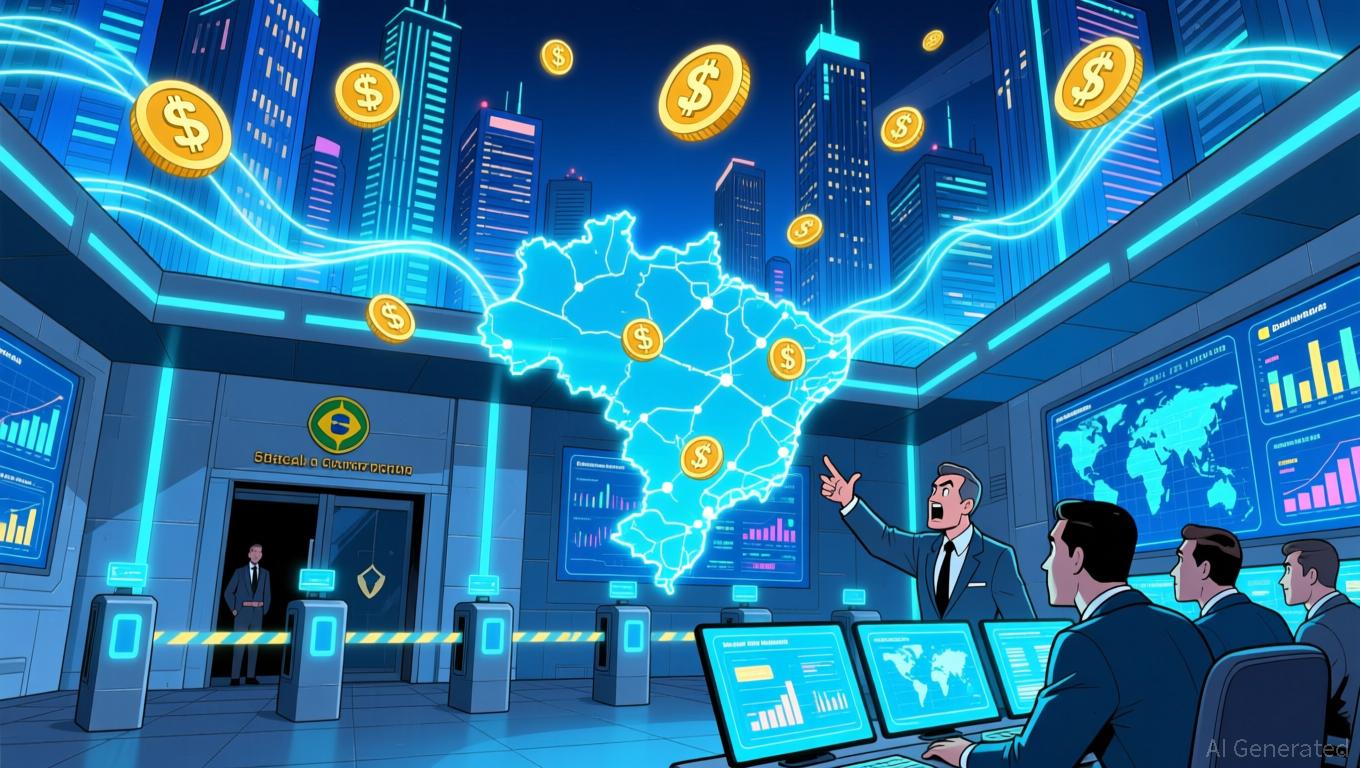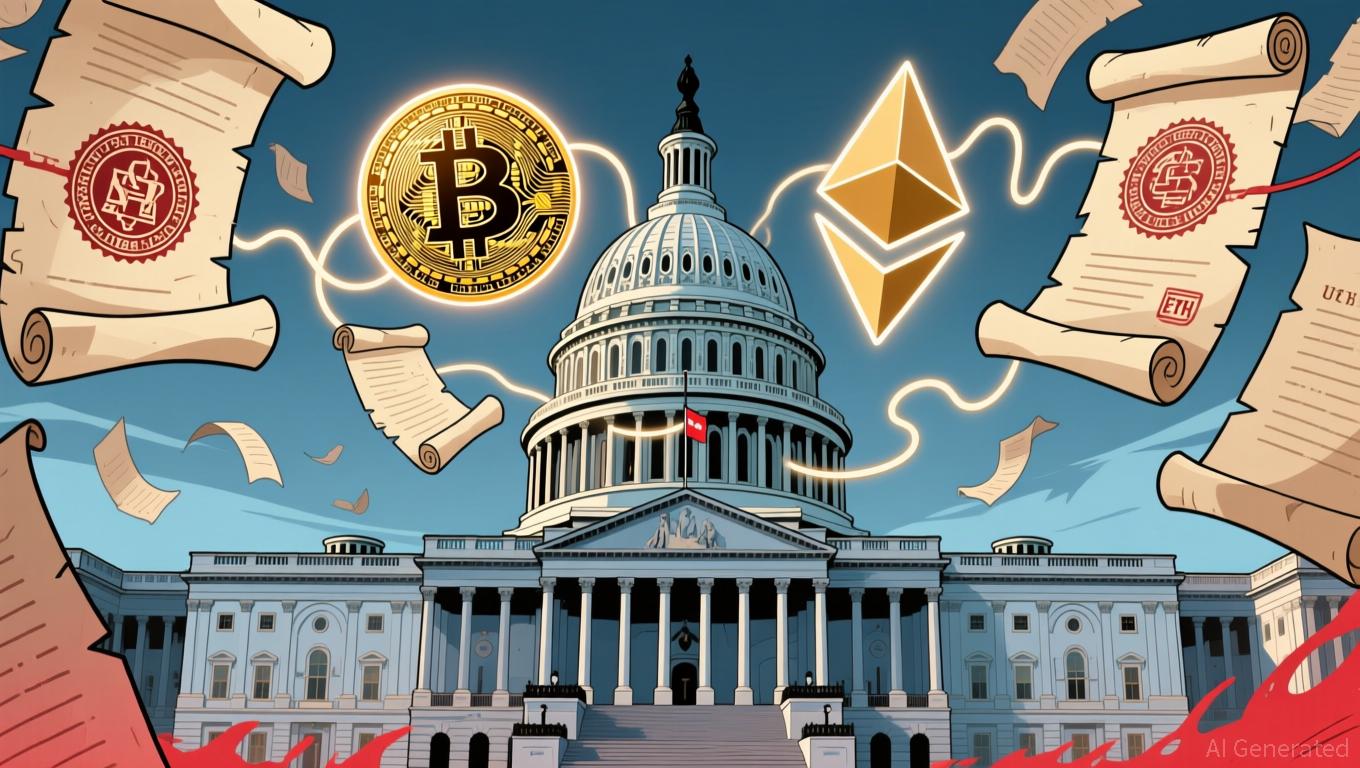Yen’s Decline: Japan’s Stimulus and BOJ Face Off Grows as Fed Pauses
- Japanese yen hit 10-month low vs. dollar at 157.36 amid Fed policy uncertainty and ¥25 trillion stimulus plan. - BOJ's rate-hike hesitation and weak Q3 Japanese data accelerated yen's decline despite record bond yields. - Fed's divided stance reduced December cut odds to 43%, pushing dollar index to 99.545 as hawkish signals emerged. - Japanese officials warn of "one-sided" yen depreciation but intervention unlikely below ¥156 level. - Analysts predict dollar/yen consolidation near 157.36, with yen under
Asian foreign exchange markets experienced volatility on Thursday as the Japanese yen dropped to its lowest point in ten months against the U.S. dollar, influenced by a split within the Federal Reserve and Japan’s ongoing fiscal stimulus. The USD/JPY pair
Minutes from the Fed’s October meeting highlighted significant disagreements among officials, with “many” opposing a rate cut in December while “several” believed one was probable
In Japan, the yen’s depreciation is being worsened by conflicting approaches between aggressive fiscal spending and cautious monetary policy. Takaichi’s government has

The yen’s weakness reflects a broader pattern across the region. Other Asian currencies,
Technical analysis indicates that USD/JPY may consolidate in the near term, with the RSI nearing overbought levels and the pair
Market participants are now looking to Thursday’s U.S. nonfarm payrolls release for more direction on the Fed’s next steps. A weaker result could momentarily reduce demand for the dollar, giving the yen a short-lived boost
Disclaimer: The content of this article solely reflects the author's opinion and does not represent the platform in any capacity. This article is not intended to serve as a reference for making investment decisions.
You may also like
Zerohash Amidst Crypto’s Ultimate Turmoil
- Zerohash faces liquidity and reputational risks amid crypto market turmoil, driven by unconfirmed survey claims and sector-wide volatility. - A $168M liquidation event on GMX highlights systemic risks from high-leverage trading, echoing prior $100M losses by trader James Wynn. - Regulatory uncertainty intensifies with U.S. stablecoin projections, EU MiCAR compliance shifts, and Trump-era pardons complicating compliance frameworks. - Institutional investors pivot to yield-bearing stablecoins (e.g., 15% AP

Brazil Suggests Taxing Stablecoins to Address $30 Billion Shortfall and Meet International Norms
- Brazil plans to tax stablecoin transactions via expanded IOF to align with global standards and recover $30B in lost revenue. - Stablecoin transfers (e.g., USDT) will be reclassified as forex operations under 2025 central bank rules, subjecting them to IOF tax. - The move aligns with OECD's CARF framework, enabling international crypto data sharing and joining global efforts to combat tax evasion. - Political debates persist over crypto tax exemptions, while regulators aim to curb money laundering and in

CFTC's Expansion into Crypto: Providing Guidance or Hindering Progress?
- U.S. Senate Banking Committee will vote in December 2025 on a crypto bill designating Bitcoin and Ether as CFTC-regulated commodities to resolve SEC-CFTC jurisdiction conflicts. - The bill mandates exchange rules like customer fund segregation and conflict controls, addressing vulnerabilities exposed by FTX-style failures. - Global regulatory shifts and U.S. firms' European expansion (e.g., Ondo, BitGo) highlight urgency for a framework balancing innovation with risk mitigation. - Proponents claim the bi

EMS Market to Reach $219 Billion: AI, Blockchain, and Sustainability Initiatives Transform Energy Sector by 2034
- Global EMS market to grow from $56B in 2025 to $219.3B by 2034 at 16.4% CAGR, driven by energy costs, regulations, and AI/smart grid/blockchain adoption. - AI and blockchain enable real-time energy optimization, peer-to-peer trading, and decentralized renewable energy management, while 5G and storage tech expand EV integration. - Governments accelerate adoption through net-zero policies, and EaaS models democratize access by shifting to subscription-based cost structures for SMEs. - High integration cost
